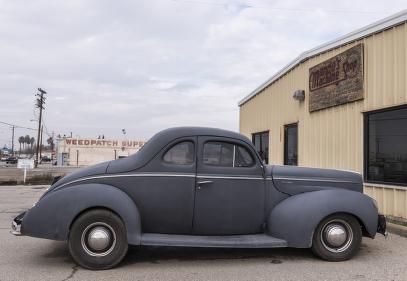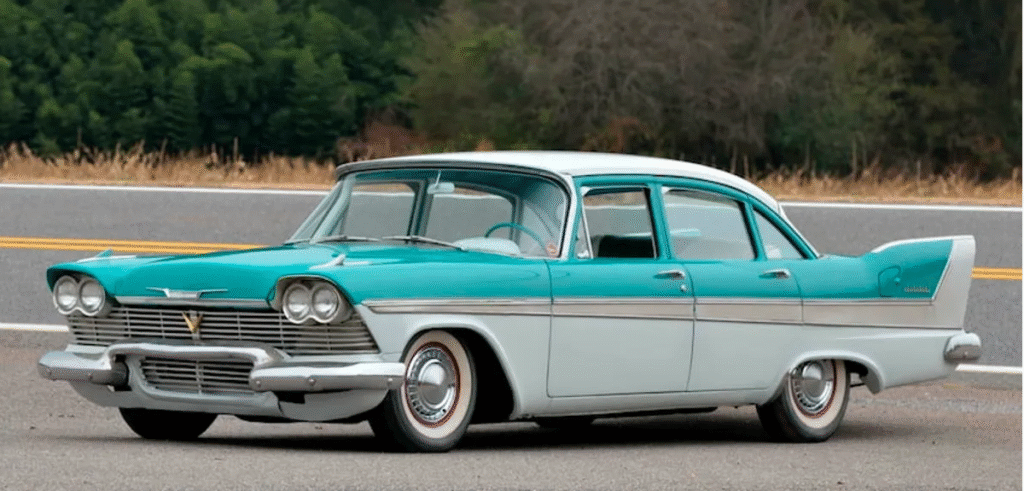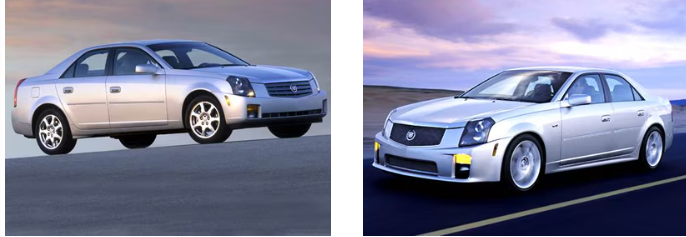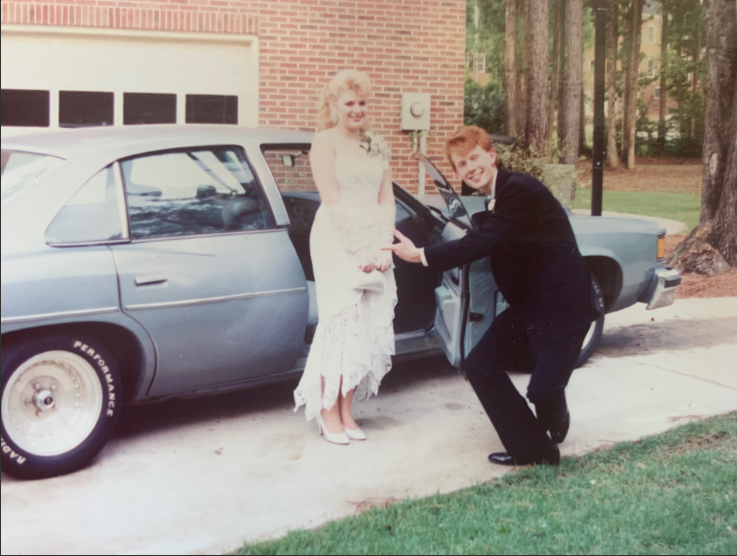“I got me a Chrysler, she seats about twenty, so come on! And bring your jukebox money.” The B-52s.
Sleeper cars were the beginning of the muscle car movement and still drives the collector hobby of today, but in the long span of American auto history, they were only around for a short time.
Some were used for illicit purposes and others by gearheads who had to dress in a suit for their day job. Sometimes they were used by teenagers who wanted to pull their hooptie with mags up to ‘Vette at a stoplight and smoke the heck out of the hapless other driver on green.
“Alexis” was not my first car; I managed to destroy my first two cars. Alexis was the first car I paid for myself, and it was my grandfather who sold it to me. Wanting me to learn a lesson, he wouldn’t let me drive the car out of his driveway until I had paid off the full $700 asking price. That was a fairly steep price for a 17 year old in 1988.
My grandfather knew what he had, but he was willing to give me a discount.
The car was a four-door 1977 Pontiac LeMans in a nice Lombard Blue tone, and I wasted no time in putting on shiny new mag wheels. Underneath, the car was equipped, as ordered from the factory by the first owner, with an Oldsmobile 350 “Rocket” V-8 paired with a “cop” transmission and rear end.
I felt like I had a sleek version of the “Blues Brothers” car, which was a 1974 Dodge Monaco sedan and I remember when my best friend Benjie Westafer and I hopped in it the first time, I couldn’t help but blurt out:
“It’s got a cop motor, it’s got cop tires, cop suspensions, cop shocks. It’s a model made before catalytic converters so it’ll run good on regular gas.” I recall that between us, we had about a half a pack of cigarettes, and I was wearing my trademark Fedora and, of course, shades.
In 1988, The B-52s released their hit song “Love Shack,” and that tune would blare from the speakers as six of my friends and I would comfortably fit in as we cruised up and down Washington Road on any given Saturday night.
As it turned out, my grandfather got the car from Mrs. Mary, a lady who lived in his neighborhood. Mary got the car from her son, who was a mechanic with the Pontiac dealership. When he couldn’t make the payments on his special-ordered sofa on top of a rocket on four wheels, his mama bailed him out by taking up the payments. The elderly lady only used the car to go to the grocery store and attend church and factory plastic remained on the back floorboards.
That is how I happened upon the car.
Alexis also featured Pontiac’s trademark “Wide-Track” wheelbase which made the car look lower to the ground, and it hugged the road like a yacht that could be steered by pinkie finger, but its gutted out emission system gave the car far more than the rated 150 horsepower, and it would leave the Camaro IROC-Z in the rearview mirror as if the IROC were standing at idle.
Adhering to the old cliche, just about the only thing that car wouldn’t pass on the street was the gas station.
To this day, I miss that car, but I was lucky to have one of the last of the true sleepers, even if I only had it for a few years before I downsized like everyone else.
For the fun of it, I asked ChatGPT, or Artificial Intelligence, to identify the top sleeper cars, and it spit out a list that included the 1959 Edsel, the Tesla Model S Plaid, the Kia Stinger GT and, incredibly, the 1959 Lincoln Continental.

While it is almost offensive to call an EV a “sleeper,” it is total sacrilege to lump the ‘59 Lincoln in with same group as the 1969 Chevy Biscayne. The ‘59 Continental was a garish, chrome laden, monstrosity that weighed as much as the tender ship to the Olympic Class ocean liners. If nothing else, it commanded attention the sleeper abhored.
Of course the Lincoln sported 350 horses under the hood, it had to that have that much as a minimum amount of power to propel that steel barge and getting it stopped safely almost required a parachute. The ‘59 was such a Mae West inspired tawdry mess it nearly sank the company and led to the creation of the legendary 1961 Continental, forever known as the “Kennedy Car.”
If this is the best AI can do when answering such a simple question, I worry less about it eventually taking over the planet and enslaving humans. If anything, the ’61 Continental has much more potential for “sleeper-hood” than its predecessor.
The first true sleepers were born out of the Southern bootleg liquor trade, according to Hot Rod magazine. They had to be able to outrun anything on dirt back roads of Hazzard, or in real life, Columbia County, and also be able to fit in without attracting unwanted attention.
One car in particular was the standout favorite among bootleggers, the 1940 Ford Coupe served many a Georgia moonshiner proud.
In fact, it was the early sleepers that created NASCAR as described in The Augusta Press’ 2024 article titled “The boozy beginnings of NASCAR.”

Since most cars of the Prohibition era were two-door sedans, the early sleepers were really coupes, but as four-door sedans became more prevalent, whisky runners chose the larger size as it looked like a family car and could fit even more booze under the fake back seat.
As performance became an important trend in the late 1950s and 1960s, some people, mainly men, wanted a car that showed they had reached a certain economic level professionally and could double as a car that would both fit their 2.5 kids while catering to their desire to be able to safely pass any other thing on the interstate with ease. They specifically did not want a Corvette, a souped up T-Bird or even a Pontiac GTO, lest there may be whispers that the man was suffering from a mid-life crisis.
Master of Horror Stephen King picked a 1958 Plymouth Fury as his demon-car in “Christine,” and he couldn’t have picked a better model for his story. The Plymouth, in his book, was four-door, and had a snarling front end along with sneering, beady-eyed, maniacal clown rear taillights that screamed “I am evil incarnate” and it packed punch under the hood.

Almost all of the “Forward Look” Chryslers of the time, which included the ‘58 Plymouth Belvedere Fury, had performance packages that included serious performance in a package that looked totally suburban and that included its’ station wagon models.
Oldsmobile, however, was the undisputed leader along with John DeLorean’s Pontiac in creating true sleepers with their various models like the Delta 88 and Pontiac Tempest Although, the latter’s name should have given it away.
By the 1970s, real gearheads would take their Chevy Impala, Pontiac LeMans and Ford LTD sedans to a mechanic they trusted to drill through the catalytic converters and tune the engine away from factory settings to give those cars enormous power output. A lot of folks would install glass packs that would betray the humble appearance as they rumbled into the church parking lot just in time for Sunday school.
It would be fair to say that sleepers petered out in the 1980s. Cars like the Buick GNX advertised what they had under the hood with the blackout chrome, but there were a few like the Taurus SHO that kept the tradition alive. Occasionally, a car like the 2004 Cadillac CTS, came along that was a Caddy, and a sleeper car, that did actually “zig” and its sleek styling hid the fact that it could “zag and drag” too.

Today, collectors love to get their hands on sleepers, not only for their rarity, but most of the survivors from the era were meticulously maintained by careful owners who preferred to keep their baby garage-stored.
I sure do miss my “Gran-Gran,” and that monster 1977 LeMans he sold to me, warning, “Now she’s got a habit where she creeps along and before you know it, you’re doing 95 with a cop squarely on your tail. You might outrun him, but I wouldn’t advise you to try!”
See you on the road!
Scott Hudson is the Senior Investigative Reporter, editorialist and weekly columnist for The Augusta Press. Reach him at scott@theaugustapress.com













